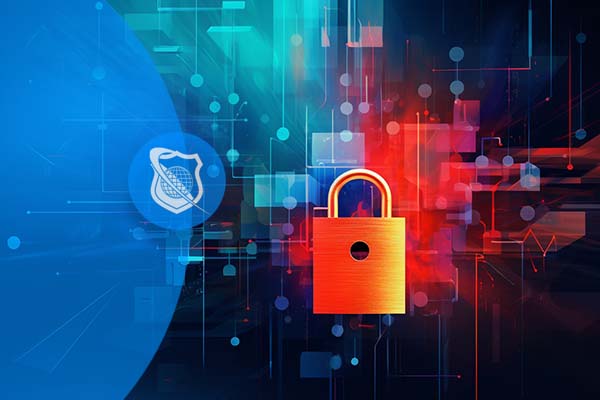The Essential Guide to Penetration Testing: Phases, Tools, and Techniques
In today’s digital landscape, cybersecurity threats are more sophisticated and prevalent than ever. Organizations of all sizes face constant risks from cybercriminals, malicious insiders, and nation-state actors. Penetration testing, often called “pen testing,” is a critical practice in the cybersecurity arsenal, designed to identify vulnerabilities before malicious actors can exploit them. By simulating real-world attacks, penetration testing helps organizations understand their security posture, strengthen defenses, and comply with regulatory requirements.
This comprehensive guide delves into the core phases, tools, and techniques of penetration testing. It explores the structured approach that ethical hackers follow, from initial planning to final reporting, highlighting how each step contributes to a thorough security assessment. Whether you’re an aspiring cybersecurity professional, a security manager, or an organization looking to improve your defenses, understanding the essentials of penetration testing is vital. You will learn about the progression of testing phases, the most effective tools in the field, and how to navigate the ethical and legal landscape involved in simulated cyberattacks.
Introduction to Penetration Testing
What exactly is penetration testing? At its core, it is a simulated cyberattack conducted by authorized security professionals to evaluate the security of computer systems, networks, and applications. Penetration testing aims to uncover vulnerabilities that could be exploited by malicious actors, providing organizations with insights into their weaknesses and recommendations for remediation.
The importance of penetration testing in cybersecurity cannot be overstated. As cyber threats evolve rapidly, only proactive testing helps organizations stay ahead. It not only identifies technical flaws—such as unpatched software, misconfigured systems, or weak passwords—but also assesses security policies, employee awareness, and the effectiveness of existing controls. Pen testing supports a risk-based approach to cybersecurity, enabling organizations to prioritize resources and strengthen their defenses accordingly.
Legal and ethical considerations are fundamental in penetration testing. Only authorized testing with explicit consent ensures that activities remain within legal boundaries. Ethical guidelines require testers to minimize impact, protect sensitive data, and report findings responsibly. This ethical framework fosters trust between testers and organizations, ensuring that pen testing remains a constructive, lawful activity.
Historically, penetration testing has evolved from simple vulnerability scans to sophisticated, multi-layered exercises that incorporate automation, artificial intelligence, and continuous testing. Trends now include integration with DevSecOps pipelines, cloud environments, and threat intelligence feeds, reflecting the dynamic threat landscape.
The core goals of penetration testing are to identify vulnerabilities, assess the potential impact of exploitation, improve security controls, and ensure compliance with standards like PCI DSS, HIPAA, and ISO 27001. Ultimately, it’s about proactively defending digital assets against increasingly complex attacks.
Planning and Reconnaissance Phase
Understanding the scope and objectives of the test
Effective penetration testing begins with meticulous planning. Clear scope definition ensures that all stakeholders understand what systems, networks, or applications are to be tested, along with any limitations or restrictions. This phase involves establishing objectives such as testing for specific vulnerabilities, assessing security controls, or evaluating compliance requirements.
Setting boundaries prevents unintended disruptions and legal issues. For example, defining whether the test includes internal and external network segments or focuses solely on web applications helps create a targeted, efficient process. Detailed scope documentation also clarifies reporting expectations, timelines, and resource allocation, avoiding scope creep and ensuring alignment with organizational risk management strategies.
Gathering information about the target environment
Information gathering, or reconnaissance, is the foundation of a successful penetration test. This stage involves collecting as much detail as possible about the target environment without actively interacting with the systems—using passive methods—or through direct engagement—using active techniques. The goal is to identify potential entry points, vulnerabilities, and valuable data that can inform subsequent attack phases.
Passive reconnaissance includes analyzing publicly available information such as domain registrations, social media profiles, and technical documentation. Active reconnaissance involves techniques like network scanning, port scanning, and fingerprinting to discover live hosts, open ports, and running services. Effective reconnaissance reduces uncertainty, helping testers focus on the most promising attack vectors.
Techniques for information gathering
- Passive reconnaissance methods: These include OSINT (Open Source Intelligence) tools, social media analysis, and website footprinting. For example, examining LinkedIn profiles may reveal employee roles, while domain registration data can uncover company infrastructure details.
- Active reconnaissance techniques: These involve direct probing, such as network scanning with tools like Nmap, to identify live hosts and open ports. Banner grabbing can reveal software versions, and vulnerability scans help identify potential weaknesses before exploitation.
Tools for reconnaissance
- Nmap: A versatile network scanner used to identify live hosts, open ports, and services. It supports scripting for advanced reconnaissance.
- Recon-ng: A powerful open-source framework for gathering intelligence from various sources, including social media and DNS records.
- Maltego: Visual link analysis tool that maps relationships between entities like domains, IPs, and people, providing a comprehensive picture of the target environment.
- Shodan: Search engine for internet-connected devices, revealing exposed cameras, servers, and IoT devices that could serve as attack vectors.
Identifying potential attack vectors and entry points
Reconnaissance uncovers possible vulnerabilities, such as outdated software, misconfigured services, or exposed management interfaces. These become potential attack vectors for later exploitation stages. For example, discovering a publicly accessible administrative panel or an unpatched web server can guide targeted attacks that yield high-value access.
Legal and ethical considerations in reconnaissance are critical. Passive methods typically pose minimal risk and are generally acceptable, but active probing—such as port scanning—must be authorized. Unauthorized scanning can violate laws or breach organizational policies, leading to legal repercussions. Always ensure that reconnaissance activities align with the scope and permission outlined in the engagement agreement.
Scanning and Enumeration
Conducting network and service scans
Once reconnaissance is complete, the next step involves active scanning to identify live systems, open ports, and available services. This process helps map the attack surface comprehensively. Network scanning tools like Nessus and OpenVAS perform vulnerability assessments by identifying known weaknesses and misconfigurations.
Service scanning determines which services are running on open ports, such as HTTP, SSH, FTP, or database services. Understanding service versions helps identify known vulnerabilities or outdated software susceptible to exploits. This stage is crucial for prioritizing attack paths and planning further exploitation efforts.
Identification of live hosts, open ports, and services
Tools such as Nmap and Masscan efficiently detect live hosts and open ports across large networks. Banner grabbing techniques reveal service versions, which are then checked against vulnerability databases. This data supports risk assessment and helps determine the next steps.
Enumeration of systems and applications
Enumeration builds on scanning results by extracting detailed information about user accounts, shares, directories, and software configurations. Techniques include banner grabbing, directory brute-forcing, and exploiting misconfigurations. For example, enumerating SMB shares with Enum4linux can reveal sensitive data or weakly protected resources.
Discovering user accounts, shares, and vulnerabilities
- Identifying active user accounts allows targeted password attacks or social engineering efforts.
- Enumerating shared folders and network shares can expose sensitive data or facilitate lateral movement.
- Detecting vulnerabilities such as default passwords, unpatched services, or misconfigured permissions is essential for effective exploitation.
Tools for scanning and enumeration
- Nessus: A comprehensive vulnerability scanner that identifies weaknesses, misconfigurations, and missing patches.
- OpenVAS: An open-source alternative for vulnerability assessment, providing detailed reports.
- Nikto: Web server scanner that detects outdated software, misconfigurations, and exposed scripts.
- Burp Suite: An integrated platform for testing web application security, including scanning and manual testing tools.
- Enum4linux: Tool for enumerating Windows SMB shares, user info, and group memberships.
Techniques for effective enumeration
- Banner grabbing: Extracts service version info to identify exploitable software.
- Directory and file enumeration: Uses brute-force tools like DirBuster or gobuster to find hidden web directories or files.
- Exploiting misconfigurations: Leveraging weak permissions or default credentials to access systems or data.
Gaining Access: Exploitation Techniques
Understanding different attack vectors
Exploitation involves actively attacking identified vulnerabilities to gain unauthorized access. Attack vectors vary widely, including web application attacks like SQL injection, cross-site scripting (XSS), and cross-site request forgery (CSRF). Network attacks employ techniques such as buffer overflows, packet crafting, and man-in-the-middle exploits.
Social engineering tactics—such as phishing emails and impersonation—are also common, exploiting human vulnerabilities rather than technical flaws. Exploiting known vulnerabilities in software or hardware, especially unpatched or misconfigured systems, remains a primary method for initial access. Understanding these vectors allows penetration testers to simulate realistic attack scenarios effectively.
Tools for exploitation
- Metasploit Framework: A powerful platform for developing, testing, and executing exploits against various systems.
- Cobalt Strike: Commercial tool for advanced post-exploitation, command and control, and lateral movement.
- SQLmap: Automated tool for detecting and exploiting SQL injection vulnerabilities.
- Hydra: Rapid network login cracker supporting numerous protocols for brute-force attacks.
- BeEF: Browser Exploitation Framework for targeting web browsers and executing client-side attacks.
Best practices for controlled exploitation
- Maintaining stealth: Use techniques like slow, randomized scans and avoid noisy commands to minimize detection.
- Minimizing impact: Conduct exploits carefully to prevent system crashes or data corruption, especially in production environments.
- Documenting steps and outcomes: Record all actions taken, including payloads used and responses received, for comprehensive reporting.
Post-Exploitation and Privilege Escalation
Maintaining access and establishing persistence
After gaining initial access, it’s essential to establish persistence—methods that allow continued access even if the initial vulnerability is patched or closed. Techniques include creating backdoors, installing remote access Trojans (RATs), or modifying existing accounts and services. This phase helps simulate advanced persistent threats (APTs) and assesses the organization’s ability to detect and respond to ongoing breaches.
However, in ethical pen testing, maintaining persistence is carefully controlled and only used for testing purposes, with the explicit goal of demonstrating potential impacts rather than causing harm.
Techniques for privilege escalation
- Exploiting misconfigurations: Leveraging weak permissions or unpatched vulnerabilities to elevate privileges.
- Using privilege escalation tools: Tools like Mimikatz and PowerSploit extract credentials or exploit known vulnerabilities to gain administrative rights.
- Credential dumping: Extracting stored passwords, hashes, or tokens for lateral movement or persistent access.
Tools for post-exploitation
- Mimikatz: A widely used tool for extracting plaintext passwords, hashes, and Kerberos tickets from Windows memory.
- PowerSploit: A PowerShell post-exploitation framework for executing various privilege escalation and lateral movement techniques.
- Empire: An agentless, PowerShell-based post-exploitation framework supporting command and control.
Assessing extent of access and data exfiltration potential
Once elevated privileges are achieved, testing focuses on what sensitive data can be accessed or exfiltrated. This includes locating confidential documents, financial data, or intellectual property, and evaluating how easily data could be transferred out of the network. These assessments help organizations understand their data security gaps and improve controls like encryption, access management, and monitoring.
Documenting findings and preparing for reporting
Thorough documentation during post-exploitation ensures clear communication of risks and vulnerabilities. It includes detailed descriptions of escalation steps, data accessed, and potential impacts. This information forms the basis of the final report, enabling stakeholders to understand the severity and prioritize remediation efforts.
Covering Tracks and Avoidance Techniques
Methods to evade detection
Advanced attackers often employ anti-forensic techniques to hide their activities, and penetration testers simulate these tactics to assess detection capabilities. Methods include clearing logs, deleting footprints, and using obfuscation techniques such as encrypting payloads or disguising traffic patterns.
Employing tools like Timestomp or proxy chaining helps avoid detection, but ethical testers must balance stealth with transparency. These techniques reveal whether security controls like IDS or SIEM systems are effective at identifying malicious activities.
Understanding detection mechanisms
- Intrusion Detection Systems (IDS): Monitor network traffic for suspicious activity or known attack signatures. Signature-based IDS detect known threats, while anomaly-based systems flag deviations from normal behavior.
- Security Information and Event Management (SIEM): Collects, analyzes, and reports on security logs, helping identify complex attack patterns and insider threats.
Strategies to avoid detection without crossing ethical boundaries
- Employ realistic attack simulations that mimic actual threat actor behaviors.
- Use stealth techniques like timing, payload obfuscation, and traffic shaping.
- Coordinate with security teams to understand detection thresholds and avoid triggering false alarms.
Reporting and Remediation
Compiling comprehensive penetration testing reports
Effective reporting is critical for translating technical findings into actionable insights. The report should be clear, structured, and tailored to the audience, including technical staff and executive leadership. It must document vulnerabilities, attack paths, impact assessments, and remediation recommendations.
Key components of an effective report
- Executive summary: High-level overview of findings, risks, and recommendations for decision-makers.
- Technical findings with evidence: Detailed descriptions, screenshots, logs, and proof-of-concept code demonstrating vulnerabilities.
- Risk assessment and impact analysis: Prioritized list of vulnerabilities based on severity and likelihood of exploitation.
- Recommendations for remediation: Practical steps to fix vulnerabilities, improve policies, and strengthen defenses.
Communicating findings to stakeholders
Clear communication ensures that organizations understand the risks and take appropriate action. Use non-technical language for executive summaries and visual aids like charts and diagrams. For technical teams, provide detailed guidance, scripts, and configuration suggestions to facilitate swift remediation.
Developing and prioritizing mitigation strategies
- Patch management and regular updates to fix known vulnerabilities.
- Implementing strong access controls and multi-factor authentication.
- Enhancing monitoring, logging, and incident response capabilities.
- Conducting employee training to reduce social engineering risks.
Follow-up testing and verification
After remediation, conducting follow-up tests verifies that vulnerabilities are successfully addressed. Continuous testing and vulnerability management sustain security posture improvements and adapt to emerging threats.
Tools and Techniques in Modern Penetration Testing
Emerging tools and automated testing frameworks
Automation accelerates many aspects of penetration testing, from scanning to exploitation. Frameworks like Burp Suite Pro, OWASP ZAP, and Nikto automate web vulnerability detection. Additionally, specialized frameworks like Purple Team tools integrate testing with detection capabilities, fostering collaboration between offensive and defensive teams.
Role of Artificial Intelligence and Machine Learning
AI and ML are transforming penetration testing by enabling adaptive, intelligent attack simulations. These technologies can identify patterns, predict attack vectors, and automate detection evasion techniques. For example, AI-driven tools can craft more convincing phishing campaigns or detect vulnerabilities that traditional scanners may miss.
Integration of Continuous Penetration Testing
Continuous penetration testing seamlessly integrates with DevSecOps workflows, providing ongoing security validation during development cycles. Automated pipelines can trigger periodic tests whenever code changes occur, ensuring vulnerabilities are caught early and reducing exposure time.
Utilizing Cloud-based and Containerized Testing Environments
Cloud platforms and containerization facilitate scalable, flexible testing environments. Pen testers can simulate complex architectures, test cloud-native applications, and rapidly deploy sandbox environments. This approach enhances testing coverage and aligns with modern infrastructure strategies.
Adapting to the evolving threat landscape with innovative techniques
Staying ahead requires continuous learning and adopting new methodologies. Incorporating threat intelligence feeds, leveraging zero-trust architectures, and experimenting with adversary simulation tools enable organizations to prepare for sophisticated attacks and improve resilience.
Ethical and Legal Considerations
Ethical conduct and legal compliance are the backbone of responsible penetration testing. Always obtain written authorization before initiating any testing activities. Unauthorized testing can lead to legal actions, reputational damage, and breach of privacy laws.
Understanding the legal boundaries is essential, especially when testing in regulated industries such as finance or healthcare. Compliance with standards like GDPR, HIPAA, and PCI DSS ensures that sensitive data is handled securely and that testing efforts do not violate privacy rights or contractual obligations.
Penetration testers have a moral obligation to handle sensitive data with care, report vulnerabilities truthfully, and avoid causing harm. Transparency, professionalism, and adherence to a strict code of ethics foster trust and uphold the integrity of cybersecurity practices.
Conclusion
Penetration testing is a vital component of a robust cybersecurity strategy, providing organizations with a clear understanding of their vulnerabilities and the effectiveness of their defenses. Its structured phases—from planning and reconnaissance to exploitation, post-exploitation, and reporting—ensure comprehensive coverage of potential attack surfaces. Leveraging the right tools and techniques, along with a commitment to ethical standards, enables security professionals to simulate realistic threats and recommend effective remediation.
As technology advances and threats become more sophisticated, staying current with emerging tools, automation, and innovative methodologies is essential. Continuous learning, certifications, and staying engaged with the cybersecurity community—such as through resources like ITU Online Training—are keys to maintaining an effective security posture. By adopting a proactive, disciplined approach to penetration testing, organizations can better defend their digital assets and foster a security-aware culture that adapts to an ever-changing landscape.
Take action today: invest in proper training, develop a comprehensive testing program, and foster collaboration between offensive and defensive teams. The future of cybersecurity depends on your commitment to proactive, ethical, and innovative defense strategies.










